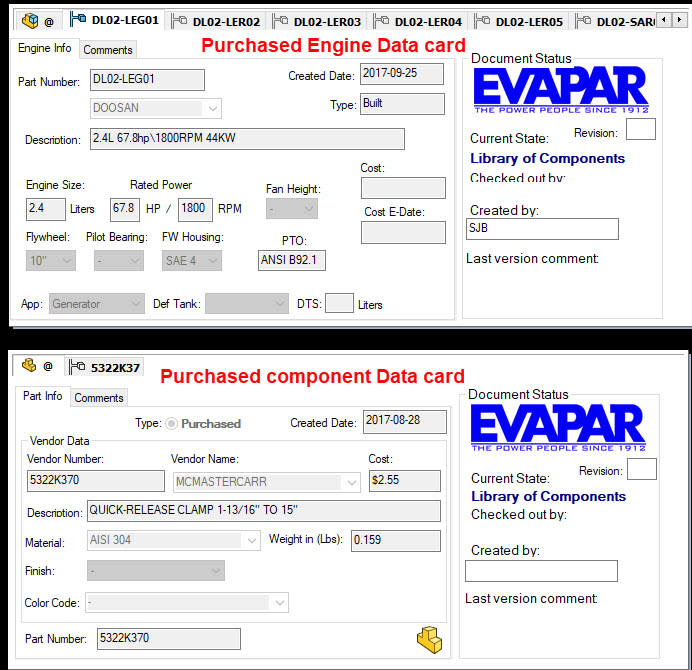We are a small company that is specialized in CAD.
We curentlly use two PC workstations with Solidworks Standard on one and Solidworks Professional on other. One workstation is also used as data storage, so the other is working over the network to access this data. This is curentlly working fine, but it is not recommended as I'm aware. But we are limited with our resources and this was the only way to go so far. We also use collaboration option when we work on same projects.
The plan is to implement PDM to our company, because of easier work and easier versioning, specially on larger projects. Does anyone have any recomendations about implementation? Companies here that implement PDM don't sell server computer and we have to find it ourselves. This will probably be the first step. To acquire server and use it as a main data storage and after some time implement PDM. Any recomendations about server computer for such small company? I have to point out that we do all IT work for our small company ourselves and if it is possible we would like to keep it that way.
We would also like to know main practical differences between PDM pro and standard, if anyone can point them out quickly.
Thanks for answers in advance.
We curentlly use two PC workstations with Solidworks Standard on one and Solidworks Professional on other. One workstation is also used as data storage, so the other is working over the network to access this data. This is curentlly working fine, but it is not recommended as I'm aware. But we are limited with our resources and this was the only way to go so far. We also use collaboration option when we work on same projects.
The plan is to implement PDM to our company, because of easier work and easier versioning, specially on larger projects. Does anyone have any recomendations about implementation? Companies here that implement PDM don't sell server computer and we have to find it ourselves. This will probably be the first step. To acquire server and use it as a main data storage and after some time implement PDM. Any recomendations about server computer for such small company? I have to point out that we do all IT work for our small company ourselves and if it is possible we would like to keep it that way.
We would also like to know main practical differences between PDM pro and standard, if anyone can point them out quickly.
Thanks for answers in advance.


![[pc2] [pc2] [pc2]](/data/assets/smilies/pc2.gif)
![[lol] [lol] [lol]](/data/assets/smilies/lol.gif) (not because of that of course). That is a huge difference between the two. STD also has a 10GB Database limit, however that is a hard limit to hit, but its still a limitation.
(not because of that of course). That is a huge difference between the two. STD also has a 10GB Database limit, however that is a hard limit to hit, but its still a limitation.![[hammer] [hammer] [hammer]](/data/assets/smilies/hammer.gif)
![[smile] [smile] [smile]](/data/assets/smilies/smile.gif)